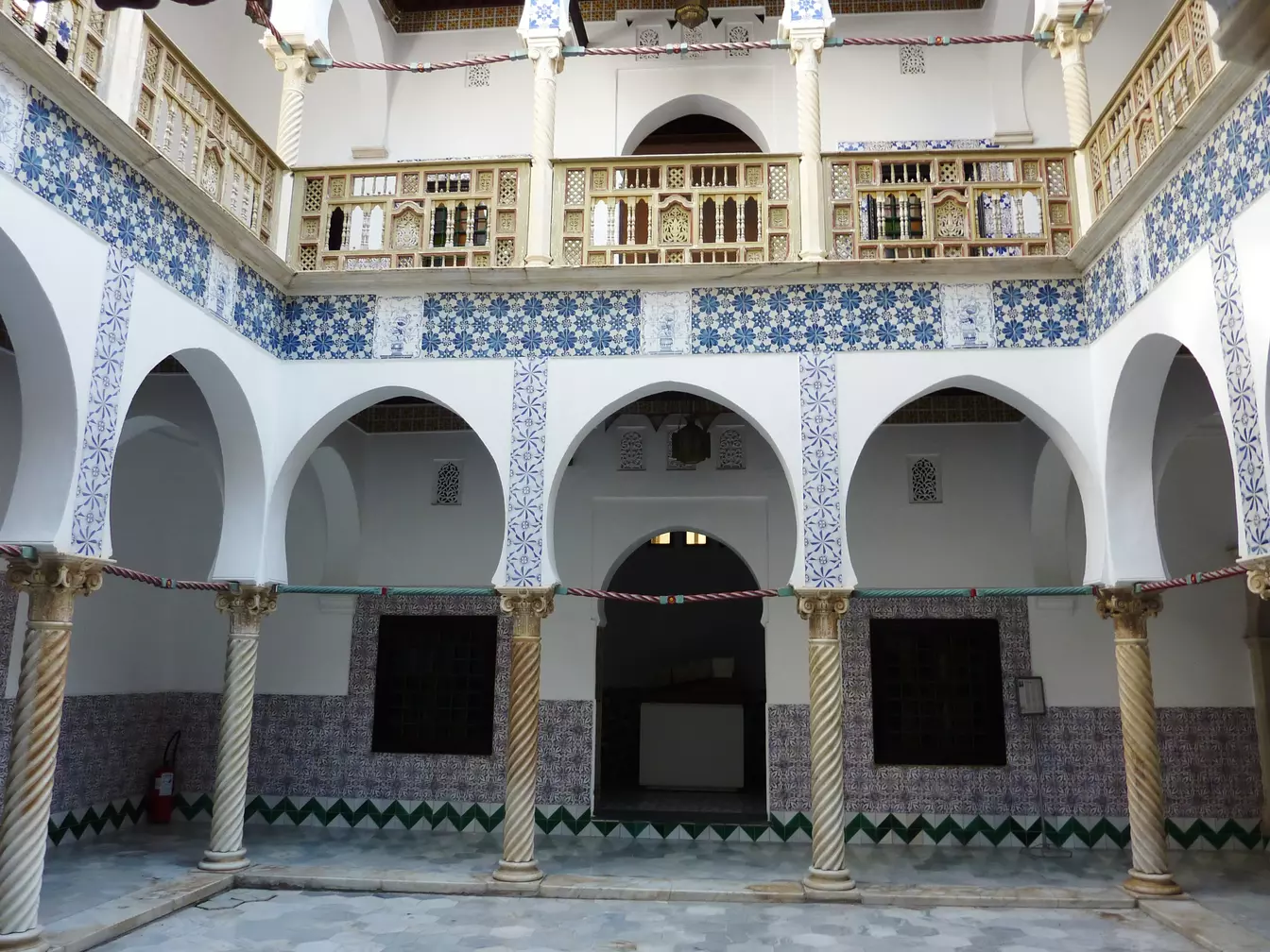
Palais des Raïs (Bastion 23)
Overall Rating: ⭐⭐⭐⭐☆ (4/5)
Rating Breakdown:
✔ Historical Significance – ⭐⭐⭐⭐⭐ (5/5)
✔ Architectural Beauty – ⭐⭐⭐⭐⭐ (5/5)
✔ Accessibility – ⭐⭐⭐☆☆ (3/5)
✔ Tourist-Friendly – ⭐⭐⭐⭐☆ (4/5)
✔ Maintenance & Preservation – ⭐⭐⭐⭐☆ (4/5)
Weather
- Algiers experiences a Mediterranean climate characterized by hot, dry summers and mild, wet winters.
Tags
- Historic Palace, Ottoman Architecture, Cultural Heritage
Timings
- Visiting hours may vary; it's advisable to check the official website or contact the palace directly for current schedules.
Time Required
- A visit typically requires 1 to 2 hours to explore the complex thoroughly.
Entry Fee
- Full Price: 200 DZDpalaisdesrais-bastion23.dz+4palaisdesrais-bastion23.dz+4alger.mta.gov.dz+4
- Artists and Cultural Workers: 140 DZD
- Student Rate: 100 DZDpalaisdesrais-bastion23.dz
- Disabled Individuals: Freepalaisdesrais-bastion23.dz
- Visitors Under 16 and Over 65: Free
Things to See & Do
- Architectural Exploration: Admire the blend of Moorish and Ottoman architectural styles, including intricate woodwork, tile mosaics, and ornate courtyards.
- Historical Significance: Learn about the palace's role as a residence for Ottoman dignitaries and its transformation over the centuries.
- Cultural Exhibitions: The palace often hosts art and cultural events, providing insights into Algerian heritage.
Best Time to Visit
- Spring (March to May) and autumn (September to November) offer pleasant weather, ideal for exploring the palace and its surroundings.
Nearest Parking Spots
- Parking in the vicinity of the Casbah is limited; utilizing public transportation or taxis is recommended.
Overview
- The Palais des Raïs stands as a testament to Algiers' rich history and architectural splendor. Constructed between 1576 and 1798 during the Ottoman era, the complex includes three palaces and six fishermen's houses, reflecting the city's maritime heritage. It serves as one of the last physical attestations of the Casbah's extension to the sea.
- Palace 18: Built around 1750 by Raïs Mami Arnaout, notable for its historical significance.
- Central Courtyard: Features traditional Islamic design with serene gardens and intricate tile work.
- Sea-facing Facades: Offer picturesque views of the Mediterranean, highlighting the strategic importance of the location.
- The complex's construction began in 1576 with Bordj-Ez-zoubia, initiated by Dey Ramdan Pacha to bolster the defense of the lower Casbah. Over the years, additional structures were added, culminating in the current ensemble. Post-1830, during French colonization, the palaces served various functions, including a residence for the French Governor and a library. In 1909, Bastion 23 was classified as a Historical Monument under the name "Group of Moorish houses."
- The Palais des Raïs showcases a harmonious blend of Moorish and Ottoman architectural styles. The complex features interconnected buildings with ornate courtyards, intricate woodwork, and decorative tile mosaics. The sea-facing facades underscore the maritime significance of the structure, while the interiors reflect the opulence of Ottoman-era design.
- Guided Tours: Engaging a local guide can enhance the experience by providing in-depth historical context.
- Dress Modestly: As a site of cultural significance, it's respectful to wear modest attire.Pinterest+7Wikipédia, l'encyclopédie libre+7DBpedia+7
- Photography: Check for any restrictions on photography within the palace premises.
- Safety: Stay aware of your surroundings, especially when navigating the narrow streets of the Casbah.
- By Foot: Located in the lower Casbah near the waterfront, it's accessible through the winding streets of the old city.
- By Public Transport: Buses and taxis can drop visitors near the Casbah; from there, it's a short walk to the palace.
- By Car: Due to limited parking, it's advisable to use public transport or park in designated areas outside the Casbah and proceed on foot.